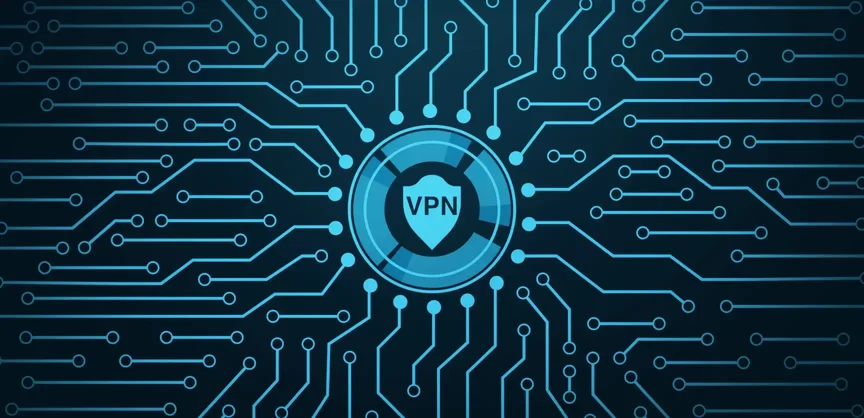The software development era is evolving faster than ever. Businesses today are not just looking for agencies that can write code; they want partners who understand technology trends, anticipate challenges, and help them innovate. In 2025, a future-ready software development agency is defined by much more than technical skill; it’s about agility, user experience, AI integration, and strategic thinking.
If your business is seeking a full-stack software development company that can deliver both technical excellence and strategic insights, it’s essential to understand what makes an agency truly future-ready. In this blog, we’ll explore the key qualities that define a future-ready software development agency in 2025.
Mastery of Full-Stack Development Across Modern Tech Stacks
At the core of any capable agency is its ability to handle full-stack development. A future-ready software development agency excels not only in front-end design and user experience but also in back-end architecture, database management, and API integrations.
By 2025, full-stack development will go beyond simply knowing popular frameworks. Agencies now embrace:
- Modern Front-End Frameworks: React, Angular, Vue.js, and others to deliver highly interactive user interfaces.
- Robust Back-End Solutions: Node.js, Python, Java, or Go for scalable and high-performance applications.
- Microservices and Serverless Architectures: These allow for rapid scaling, flexibility, and efficient resource management.
- Cloud-Native Development: Leveraging AWS, Azure, or Google Cloud for deployment, infrastructure management, and monitoring.
The combination of these capabilities ensures that businesses get applications that are not only functional but also scalable, maintainable, and future-proof. Choosing a full-stack software development company ensures that your project can move seamlessly from concept to deployment with a single, cohesive team.
Integration of Artificial Intelligence and Machine Learning
AI and ML are no longer experimental; they’re central to how modern software operates. In fact, a recent McKinsey survey found that 78% of organizations now use AI in at least one business function, a sharp rise from just a year ago. That tells you everything you need to know about where the industry is headed.
Agencies that are truly future-ready integrate AI and ML into their products to create smarter, more predictive applications.
Some examples include:
- Predictive Analytics: Helping businesses anticipate trends, customer behavior, and operational bottlenecks.
- Conversational AI: Enhancing customer support with intelligent chatbots that understand context and intent.
- Automation and Optimization: AI-driven workflows reduce human error and improve operational efficiency.
- Personalized Experiences: Using ML to tailor user experiences, recommendations, and notifications in real time.
By embedding AI into software, future-ready agencies empower clients to make data-driven decisions, reduce operational costs, and gain a competitive advantage.
User-Centric Design as a Differentiator
A software application is only as good as its user experience. Future-ready agencies prioritize UX and UI design to ensure that applications are intuitive, visually appealing, and aligned with user behavior.
This approach involves:
- Design Thinking: A structured methodology to solve complex problems by understanding user needs.
- Prototyping and Iteration: Rapid testing and refinement of features based on user feedback.
- Accessibility and Inclusivity: Ensuring applications are usable for all audiences, including those with disabilities.
- Consistency Across Platforms: Delivering a seamless experience across web, mobile, and desktop environments.
Investing in design not only improves engagement but also reduces churn and increases customer satisfaction, a critical factor for any business in a competitive market.
Agile and DevOps Practices for Speed and Reliability
The ability to respond quickly to change is a hallmark of a future-ready agency. Agile methodologies, combined with DevOps practices, allow for faster development cycles, better collaboration, and higher-quality software.
Key aspects include:
- Agile Development: Delivering incremental value with iterative planning, sprints, and continuous feedback.
- Continuous Integration/Continuous Deployment (CI/CD): Automating testing and deployment to release features reliably and frequently.
- Collaboration Between Teams: Breaking down silos between developers, QA, and operations for faster problem-solving.
- Monitoring and Feedback Loops: Continuously tracking application performance and user behavior to inform future updates.
This approach ensures that businesses can launch applications faster without compromising quality or stability.
Security and Compliance as Core Priorities
With cyber threats growing more sophisticated, security has to be built into every stage of development. Future-ready agencies follow a DevSecOps approach—integrating security practices into the development lifecycle rather than treating them as an afterthought.
Recent reports show why this matters: 95% of executives say they’ve faced at least one AI-related mishap, yet only 2% of organizations meet recognized standards for responsible AI use. This highlights how critical it is for agencies to combine innovation with responsible engineering.
Important considerations include:
- Secure Coding Practices: Preventing vulnerabilities from the ground up.
- Regular Audits and Penetration Testing: Identifying weaknesses before they can be exploited.
- Data Privacy Compliance: Adhering to regulations like GDPR, HIPAA, and regional data protection laws.
- Incident Response Planning: Preparing for potential security breaches with clear protocols.
Security-conscious agencies not only protect their clients but also instill trust with end-users, which is critical in today’s data-driven world.
Cloud-Native and Scalable Solutions
Modern businesses need applications that can scale with demand. Future-ready software agencies leverage cloud-native technologies to build flexible, scalable solutions that grow with their clients’ needs.
This includes:
- Elastic Infrastructure: Automatically scaling computing resources based on usage.
- Containerization: Using Docker, Kubernetes, and other tools for consistent and portable deployments.
- Disaster Recovery and Redundancy: Ensuring uptime and reliability even in unforeseen circumstances.
- Global Accessibility: Deploying applications closer to users via cloud regions to reduce latency.
A cloud-first approach allows businesses to stay agile, reduce operational costs, and reach users worldwide efficiently.
Culture of Continuous Learning and Innovation
Technology is evolving at breakneck speed. Agencies that remain stagnant risk obsolescence. Future-ready software development companies cultivate a culture of continuous learning and innovation:
- Training and Upskilling: Encouraging teams to master emerging frameworks, languages, and tools.
- Experimentation and R&D: Investing in new ideas, prototypes, and AI-driven innovations.
- Knowledge Sharing: Ensuring insights and best practices are shared across teams to drive collective growth.
- Client-Centric Innovation: Aligning innovation efforts with real business needs, not just technological curiosity.
This mindset attracts top talent, fosters creativity, and ensures that clients receive cutting-edge solutions.
Building Strategic Client Partnerships
In 2025, the most successful software agencies do more than deliver code—they act as strategic partners. They understand their client’s industry, business model, and growth ambitions.
Key characteristics include:
- Proactive Consultation: Advising clients on technology choices, architecture, and growth strategies.
- Transparent Communication: Maintaining regular updates, clear roadmaps, and progress tracking.
- Outcome-Oriented Delivery: Focusing on measurable results like increased engagement, reduced costs, and faster time-to-market.
- Long-Term Collaboration: Supporting clients beyond launch with ongoing maintenance, updates, and feature expansions.
This partnership mindset ensures alignment between client objectives and technological solutions, creating lasting value.
Adaptability to Emerging Technologies
Being future-ready also means staying ahead of the curve. Agencies must monitor emerging technologies and evaluate their potential impact:
- Generative AI Tools: For content creation, automated testing, or intelligent code suggestions.
- Blockchain and Decentralized Applications: Enhancing security, transparency, and trust in certain sectors.
- AR/VR and Immersive Experiences: Transforming user engagement in industries like gaming, real estate, and education.
- Low-Code/No-Code Platforms: Accelerating prototyping and deployment while maintaining customizability.
A future-ready agency identifies opportunities to integrate these technologies, providing clients with innovative solutions that differentiate them in the market.
Sustainability and Ethical Practices
Finally, the modern software development agency prioritizes sustainability and ethical practices. Clients increasingly care about environmental impact, ethical AI use, and responsible software design.
This includes:
- Energy-Efficient Coding and Hosting: Optimizing applications to reduce power consumption.
- Ethical AI: Ensuring AI systems are fair, transparent, and unbiased.
- Social Responsibility: Aligning projects with broader societal or environmental goals.
Ethical practices not only appeal to clients but also enhance the agency’s reputation and long-term credibility.
Conclusion
A future-ready software development agency in 2025 is more than just a team of coders. It acts as a partner, combining technical skills, design thinking, AI, and agile practices with a clear understanding of your business goals. These agencies stay ahead of trends, manage risks, and deliver solutions that are secure, scalable, and easy to use.
Working with a full-stack software development company that has this approach can make the difference between keeping up and leading in your market. The focus isn’t just on building software; it’s on creating smart, adaptable products that grow with your business and deliver real value to your users.









